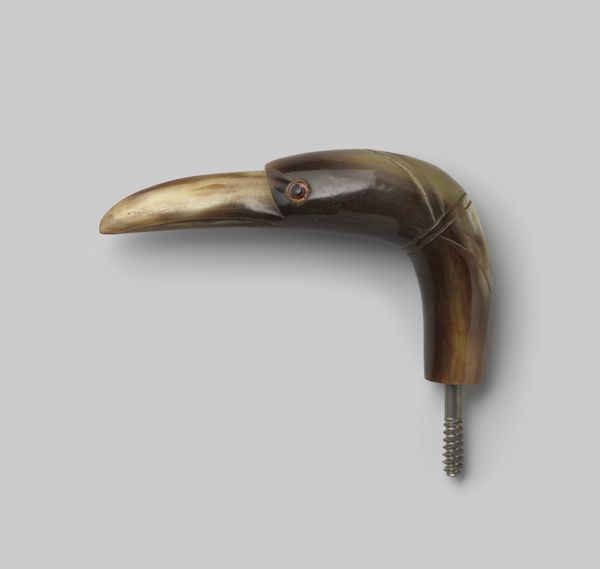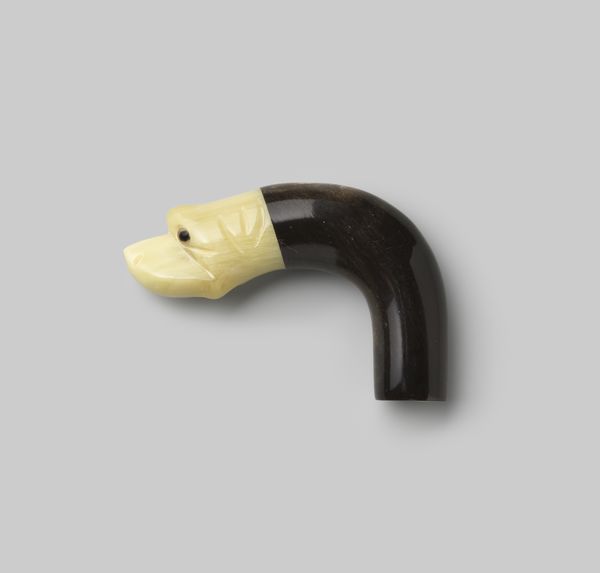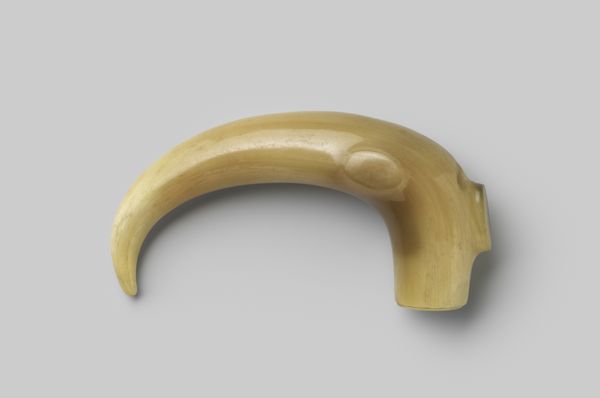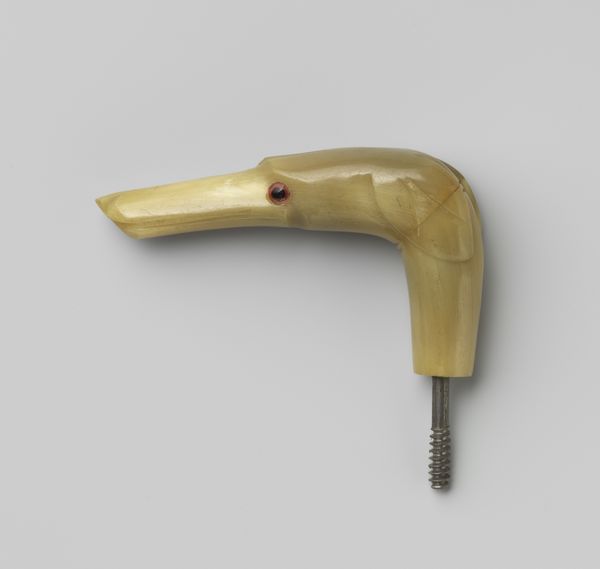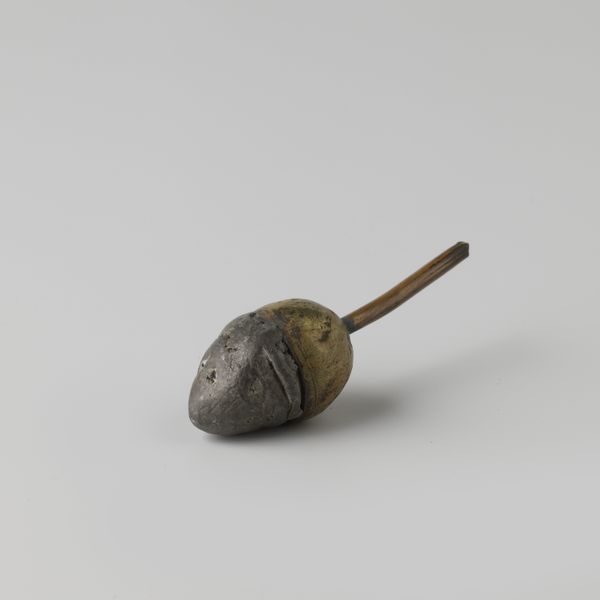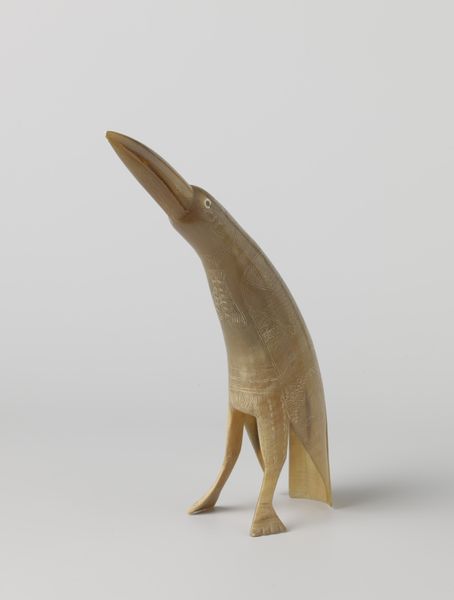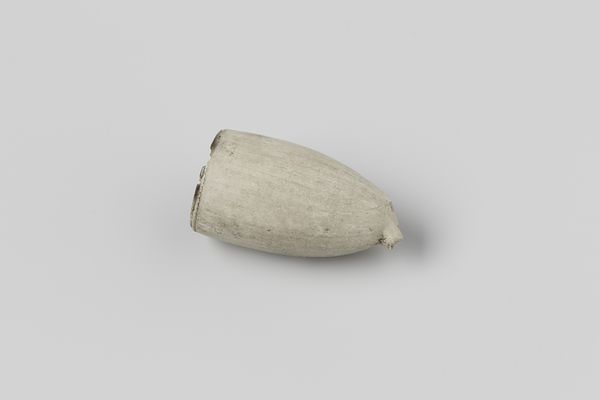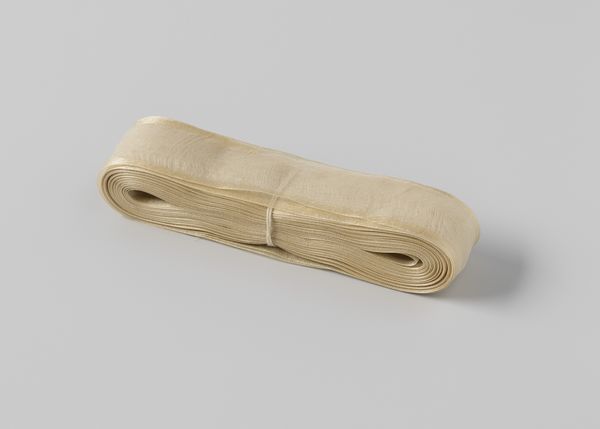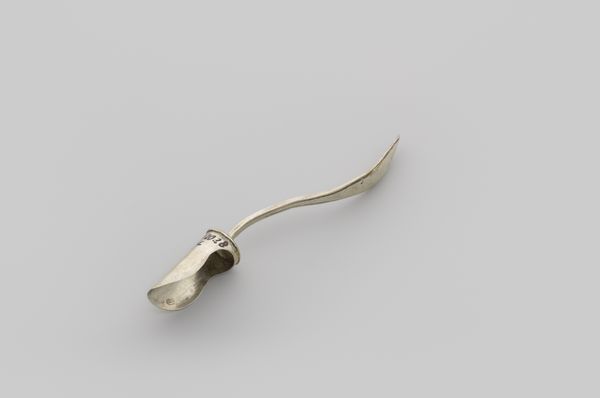
carving, sculpture, ivory
#
art-nouveau
#
carving
#
animal
#
figuration
#
sculpture
#
decorative-art
#
ivory
Dimensions: length 6.6 cm, width 8 cm, height 2.5 cm
Copyright: Rijks Museum: Open Domain
Curator: We’re looking at "Knop van beige hoorn in de vorm van een papegaaienkop," a small sculpture of a parrot's head carved from horn, likely dating from around 1900 to 1930. Editor: It’s strikingly simple. I'm immediately drawn to the smooth surface and subtle coloring, the creamy beige tones punctuated by that little dark eye. It has this restrained elegance that also feels kind of sad somehow. Curator: Well, given the era and material, its aesthetic very likely aligns with the Art Nouveau movement. Considering the context, the object might've functioned as a decorative handle or a component of a larger object like a walking stick, showcasing the intricate craftsmanship valued during that period. Editor: It's fascinating how this object encapsulates a complex set of social dynamics. The material, likely ivory or a similar animal product, hints at colonial exploitations involved in its acquisition and distribution. What does it mean to carry a piece like this, knowingly or unknowingly complicit in such historical power structures? Curator: Precisely. Furthermore, consider the labor involved. Carving horn requires specialized skills, implying a certain social stratification in production. Someone had to acquire the material, another to design and sculpt it… What was the sculptor's position, their own relationship to these larger systems of power? Editor: And how do parrots factor into the image, a non-native exotic item which could indicate ideas of power, wealth and empire? The piece becomes not just about beauty, but about power and global trade during that colonial period. It's unsettling when seen in this light. Curator: Absolutely, shifting the focus from aesthetic admiration to understanding the processes of resource acquisition, labor conditions, and market demands makes this piece more compelling. Instead of merely observing a parrot's head, we examine its life, starting from its natural origins and ending with this very object right here. Editor: I agree, situating this beautiful parrot head within its web of histories challenges the aesthetic appeal, revealing uncomfortable truths about the social and political landscapes. It becomes an invitation to critically reflect upon what and how we value in art. Curator: It truly gives us much food for thought about artistic value! Editor: Absolutely, an unexpected starting point, at least!
Comments
No comments
Be the first to comment and join the conversation on the ultimate creative platform.

